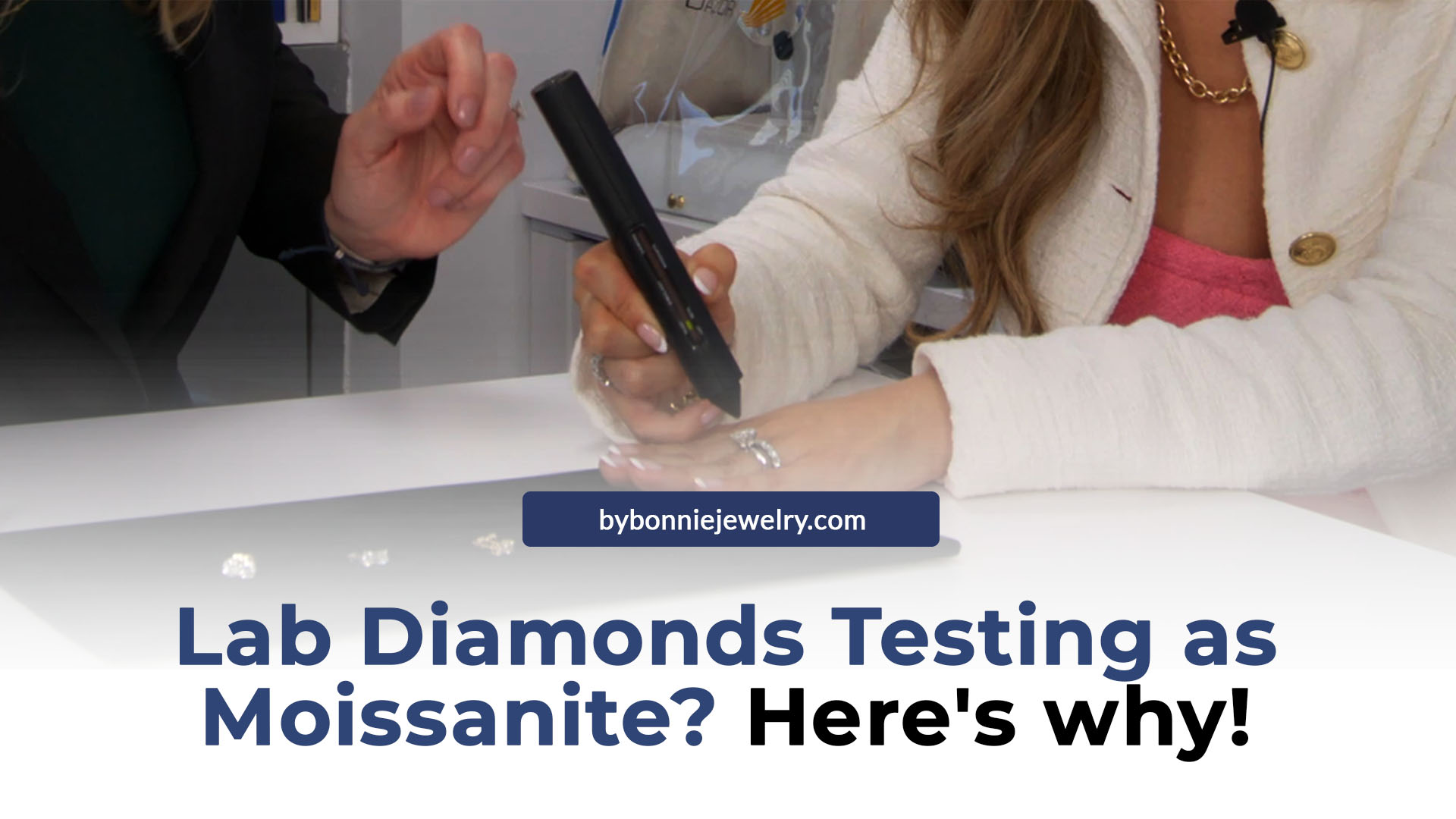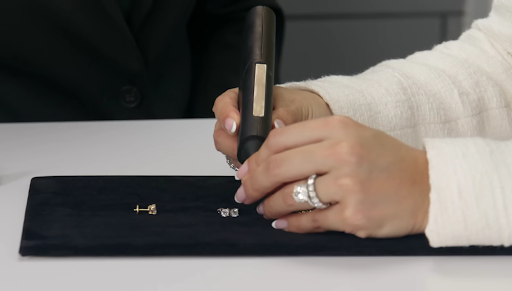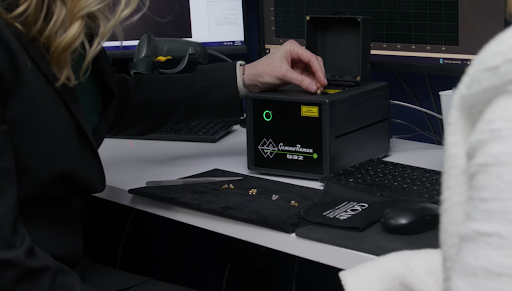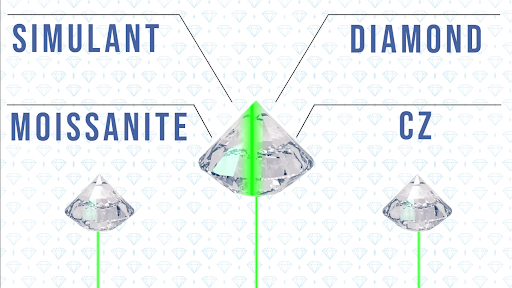Lab Diamonds Testing as Moissanite? Here 's why!

Welcome to another By Bonnie Jewelry blog post, where we’ll dive into a fascinating topic that has been causing quite a buzz lately. Imagine this: you've purchased a certified lab-grown diamond, only to have it tested with a diamond pen and discover it's labeled as moissanite. Naturally, this leaves you feeling frustrated and bewildered. Well, fear not! Today, we're here to unravel the mysteries surrounding this issue and provide you with some much-needed clarity.
We'll explore why these conflicting results occur and, most importantly, determine whether your diamonds are truly "fake" or not. Plus, we've got some exciting footage from our recent adventure in New York, where we sat down with a renowned gemologist who shares their expert insights. So, get comfy and join us on this captivating journey as we unravel the truth behind those perplexing diamond pen tester results.
Are Diamond Pen Testers The Real Deal?
Diamond pen testers, also known as diamond testers or diamond moissanite testers, are handheld devices used to determine the authenticity of diamonds. These testers employ a simple principle based on thermal conductivity.


Here's how they work: When the tip of a diamond pen tester is pressed against a gemstone, it emits a small amount of heat. Diamonds, being excellent conductors of heat, disperse it quickly, resulting in a negligible or no reaction on the tester. However, certain diamond simulants, such as moissanite, have similar thermal conductivity properties, leading to a potential misidentification.
The accuracy of diamond pen testers can be influenced by various factors. For instance, they may produce incorrect results due to limitations in their design and technology. Some testers have difficulty distinguishing between diamonds and certain diamond-like simulants. Moissanite, in particular, exhibits thermal conductivity close to that of diamonds, making it challenging for these testers to differentiate between the two accurately.
Additionally, certain materials or coatings applied to diamonds, such as high-pressure, high-temperature (HPHT) treatments or certain types of diamond coatings, can affect the thermal conductivity and subsequently impact the results obtained from diamond pen testers.
It's important to note that while diamond pen testers provide a quick and convenient method for initial screening, they are not foolproof and should not be considered as definitive proof of a diamond's authenticity. For precise and conclusive identification, advanced gemological testing methods, such as spectroscopy or microscopy, performed by trained professionals in a laboratory setting, are recommended.
So, while diamond pen testers serve as helpful tools for preliminary assessments, their results should be interpreted with caution, and further examination by a qualified gemologist is advisable to ensure accurate diamond identification.
Why Do Lab Diamonds Test As Moissanite?
One prevailing issue arises when individuals purchase lab diamonds only to have them mistakenly identified as moissanite during “pen testing”. The heart of the problem lies not with the diamond itself, but rather with outdated diamond testers that fail to account for the unique properties of lab-grown diamonds.
While considerable advancements have been made in the development of gem-quality lab-grown diamonds, the existing technology utilized by these testers is often inadequate for accurate identification. Fortunately, contemporary machines have emerged that offer a more comprehensive analysis. These innovative devices can differentiate between lab-grown diamonds, moissanite, and other diamond simulants with greater precision.
By embracing these newer technologies, we can overcome the challenge of distinguishing between natural, lab-grown, and other diamond-like alternatives, ensuring that the right gem receives its rightful recognition.
How To Tell Diamonds Apart


Now, let's take a look at this impressive piece of equipment we have here—it's called a Raman spectrometer. This sophisticated machine is incredibly valuable when it comes to identifying different types of gemstones accurately. Unlike those small handheld instruments that cost around $50, this high-end spectrometer carries a hefty price tag of around $12,000. But let me tell you, it's worth every penny.
Here's how it works: We place a stone into the machine, and a laser beam is directed onto the stone's surface. As the laser light penetrates the crystal, it bounces around inside, creating a unique pattern of wavelengths called a diagnostic identification spectra. By analyzing this pattern, we can quickly determine the type of material we're dealing with.


When it comes to distinguishing between diamonds, moissanite, and cubic zirconia (CZ), this spectrometer does an excellent job. It can tell us definitively whether a stone is a diamond or not. However, to differentiate between natural diamonds and lab-grown diamonds, we rely on another instrument. We compare the spectra of the stone in question to a database of known samples that we have stored in the spectrometer. This method is similar to what forensic laboratories use and is highly reliable for material identification. It's actually utilized across various industries, proving its effectiveness time and time again.
In comparison to those inexpensive diamond testers, which can be quite unreliable, this advanced spectrometer provides far greater accuracy and confidence in our assessments. While the price tag may seem steep, it's a worthwhile investment considering the precise and dependable results it delivers.
The More You Know…
In conclusion, we've dived deep into the world of diamond testing and explored the complexities surrounding the accuracy of diamond pen testers. We've learned that while these handheld devices can provide a quick initial assessment, they are not infallible and may yield misleading results, especially when it comes to distinguishing lab-grown diamonds from other diamond simulants.
To overcome this challenge, we introduced the Raman spectrometer, a remarkable instrument that offers fast and reliable material identification. By analyzing the unique patterns of wavelengths emitted by gemstones, this advanced machine can accurately differentiate between diamonds, moissanite, and CZ. While it cannot distinguish natural diamonds from lab-grown ones, it remains an invaluable tool used in various industries, including forensics.








